Pitador
Canis lupus
There are several names for this breed, including the Labrabull or the Pitador Retriever.
Advertisement
Pitador Facts
Pitador Physical Characteristics
Pitador as a Pet:
- General Health
- Energy Level
- Shedability
- Trainability
- Intelligence
- Tendency to Chew
- Size
- Family and kid friendliness
- Yappiness / Barking
- Moderate
- Separation Anxiety
- High
- Preferred Temperature
- Average climate
- Exercise Needs
- Moderate
- Friendly With Other Dogs
- Moderate
- Pure bred cost to own
- Though the Pitador is not a purebred, the average price ranges from $75 to $400
- Dog group
- Non-sporting
- Male weight
- 75-90 lbs
- Female weight
- 45-60 lbs
This post may contain affiliate links to our partners like Chewy, Amazon, and others. Purchasing through these helps us further the A-Z Animals mission to educate about the world's species.
View all of the Pitador images!
Pitadors are called by various names, as they are a combination of two breeds. Some of the common terms include Lab-Pit or the Pitador Retriever.
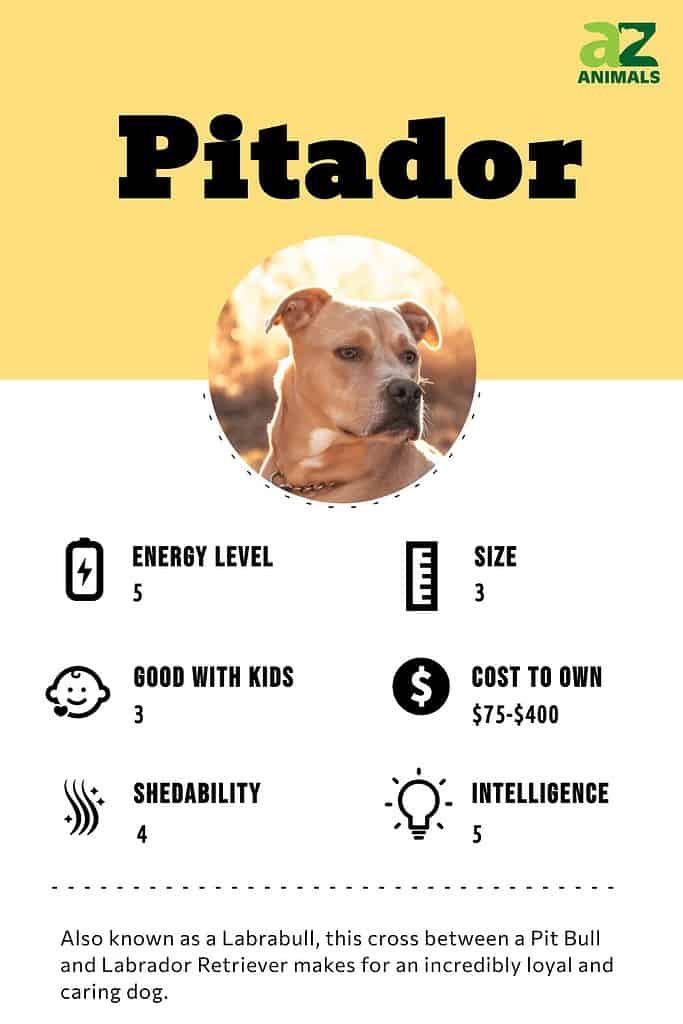
Pitador or Labrabull is a hybrid breed, combining the genetics of the American Pit Bull Terrier and the Labrador Retriever. Pitadors have a medium size, and they are energetic and loyal. The babies inherit the qualities of both their parents.
Pitadors have various other names like Lab-Pit, Pit-Lab, the Pitador-Retriever, Labrabull, a Labrador Pitbull Mix, and a Pitbull Labrador Mix. These dogs can sometimes be confused with Bulladors.
See all of our expert product reviews.
History

Pitadors have only very recently been bred intentionally.
©Literallyclover/Shutterstock.com
The Pitador is a fairly new breed of dog, first emerging during the “designer dog” boom of the 1990s, wherein many of the mixed breeds we know today first gained prominence. The two dogs who make up this breed, the Labrador Retreiver and the Pit Bull both have long, impressive histories of their own.
Labrador Retrievers were first bred as bird-hunting dogs in England during the 1800s. It wasn’t until these dogs were imported to the United States that they became as popular as we know them to be today. Their loyalty, intelligence and calm, loving demeanor have led them to consistently rank as America’s favorite dog in many polls.
The Pit Bull has a much different cultural connotation due to their long history of use in illegal dog fighting competitions. Many breeders who utilized Pit Bulls for these nefarious purposes sought to isolate and reproduce traits in the breed such as strength and aggression that would make them better fighters. Despite long being used for violent and illegal activities, Pit Bulls themselves are not to blame for this bad reputation, as with a loving and caring owner these dogs can make fantastic and harmless pets.
Health and Entertainment for your Pitador
See all of our expert product reviews.
3 Pros and Cons of Owning Pitadors
Before you buy or adopt a Pitador, it is imperative to know what works for them and what doesn’t. Since they require a lot of attention, you need to decide if they are compatible with your existing lifestyle. Here are a few pros and cons of owning a Pitador:
| Pros! | Cons! |
| Loyal: They are loyal in nature and would love you and your family unconditionally! | Co-Dependent: They need a lot of love and attention. Therefore, if you and your family are busy and are often gone from home, this dog might not be the right choice. |
| Easy to bond with: They are very easy to bond with. They do not take time to make friends and socialize with them. | Shedding: These dogs shed a lot which could be a problem for the owners in the long run. |
| Patient: If you need a dog that is not very restless, this might be it. These dogs are patient and wouldn’t be too much trouble. | Require early socialization: Whale these dogs can bond well, you would need to introduce them to a social circle early on in life to establish that habit. |
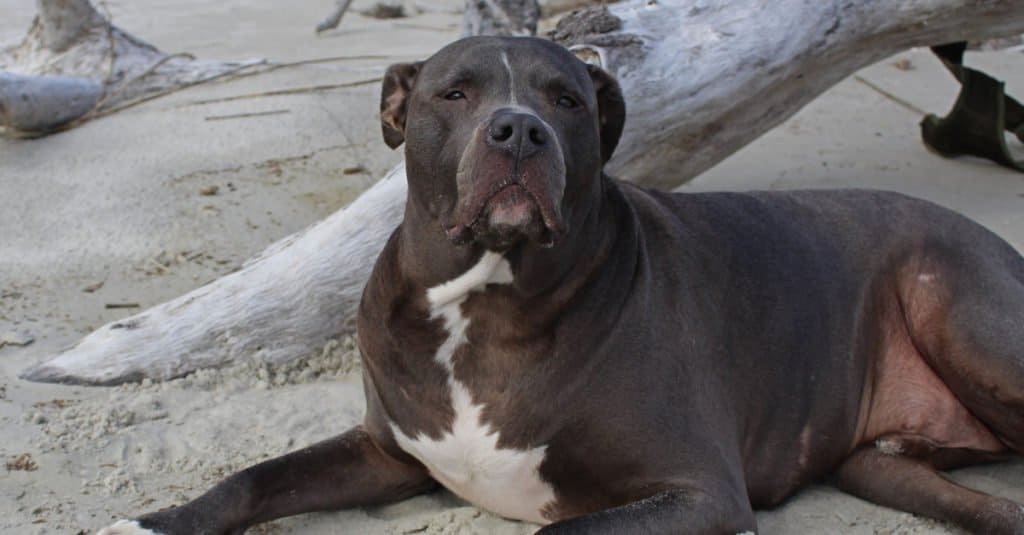
Pitadors bond easily and love attention, making them excellent family dogs.
©Megan DiLeo/Shutterstock.com
Size and Weight
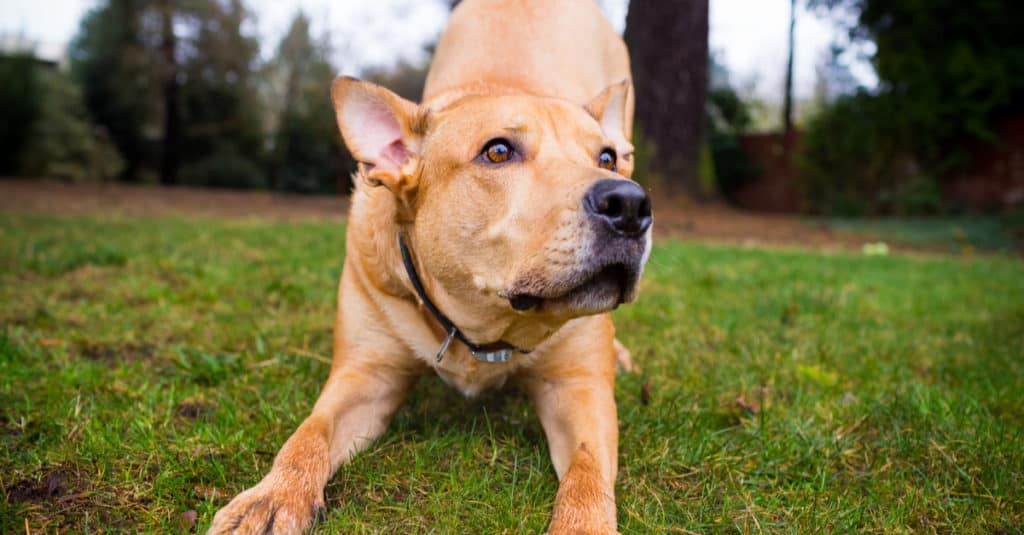
Pitadors can grow to be up to 90 lbs.
©Joshua Rainey Photography/Shutterstock.com
The Pitador is a hybrid species, but it is generally medium in size. Reports suggest that it is hard to figure out the exact size of a Pitador, due to the variations in genetics. Typically, the females can be about 20-22 inches tall, while the males can be about 22-24 inches. Females can weigh about 45-60 pounds, but males tend to be slightly bigger at 75 to 90 pounds.
| Height (Male): | 20 to 22 inches tall |
| Height (Female): | 20 to 22 inches tall |
| Weight (Male): | 45-60 lbs., fully grown |
| Weight (Female): | 75-90 lbs., fully grown |
Common Health Issues
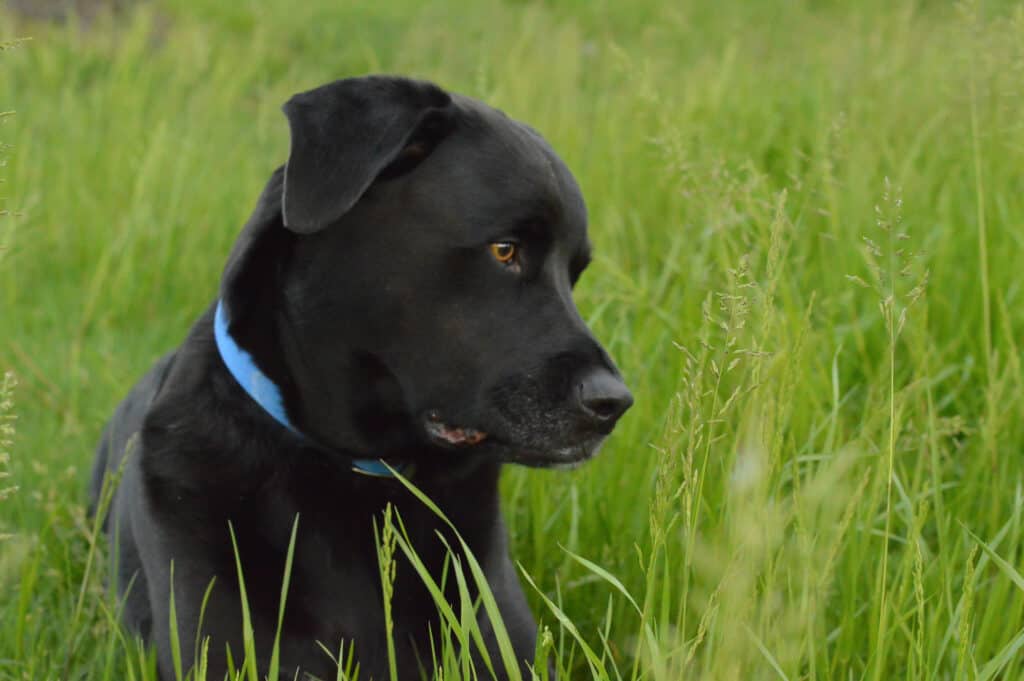
Pitadors can suffer from OCD, so they require extra attention from their owners.
©Stephanie Denise Powers/Shutterstock.com
Like all other living creatures, Pitadors also come with a number of health problems including OCD, which is a mental health issue. This problem can often be supported with soothing and loving time with their owner. Issues with the eyes, ears, and heart are also common, as these problems often arise as a result of their genetic makeup. Epilepsy can often develop, causing the dog to have seizures that could be detrimental to its brain health. If you notice any seizures, bring your dog to the veterinarian as soon as possible.
Bloating and hypothyroidism can occur. The latter is an issue in the thyroid gland, preventing the metabolism from working correctly. Pitadors can also develop acute moist dermatitis (a skin disease) and allergies.
Overall, the health problems that Pitador faces include:
- OCD
- Eye problems
- Heart Problems
- Epilepsy
- Bloating
- Hypothyroidism
- Acute moist dermatitis
- Ear infections
- Other allergies
Temperament

Pitadors can make excellent guard dogs.
©Josh Chavez/Shutterstock.com
Pitador or Labrabull is an alert breed, which is perfectly combined with its innate ability to be protective, powerful, loving, and loyal. This dog can also be very enthusiastic and can also turn aggressive if he thinks that you are in some danger.
However, if Pitadors are introduced to a social circle early on in life, they can be very well-rounded and friendly with other pets. This is also an intelligent dog so training this dog isn’t so much of a problem.
These dogs absolutely love to chew so they would always need something to chew on. They are energetic but would also love to snuggle with you. However, these dogs love attention – if you are someone who already has a relatively busy schedule away from home, they can suffer from a lot of separation anxiety.
How to Take Care of a Pitador
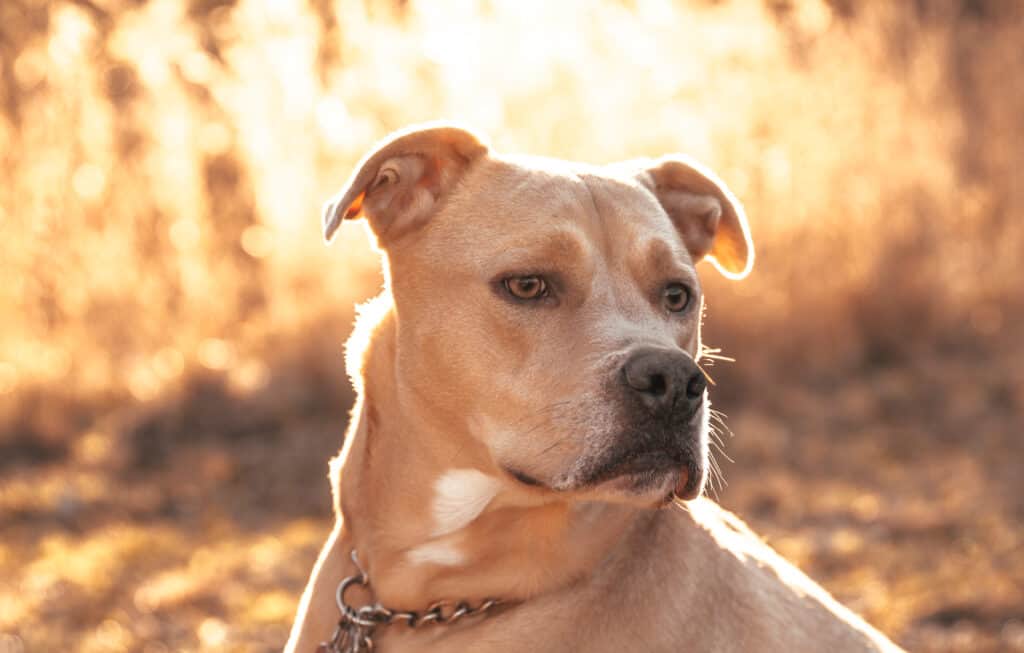
There are many factors to take into account before you adopt a Pitador.
©Josh Chavez/Shutterstock.com
It is very important before buying any pet that you know how to take good care of them. Here are a few things you would need and want to keep in mind while taking care of Pitadors:
The Best Dog Food for Pitadors
You would need to feed your Pitador 3 to 4 cups of good quality dry dog food every day. The food should be split into at least two meals per day.
If your Pitador deals with allergies, try looking up the available limited-ingredient foods intended to help alleviate dogs’ allergies.
A-Z Animals’ top pick for limited-ingredient dog food for Pitadors is Natural Balance Limited Ingredient Diet Large-Breed Adult Dry Dog Food with Healthy Grains.
Not only is this dog food formulated for larger breeds like the Pitador, but it uses a limited selection of high-quality, natural ingredients like lamb and brown rice instead of some common ingredients that lead to allergies in dogs. Additionally, there are no legumes, which is ideal for Pitadors at risk for heart problems, since legumes in dog food may be linked to heart failure. Instead, there’s a range of vital nutrients, including taurine which helps sustain a healthy heart and clear eyes.
Here’s where Pitador owners can find Natural Balance Limited Ingredient Diet for Large Breeds on amazon.
- Dog food with real salmon, sweet potato, and canola oil
- Balanced nutrition for healthy bones, heart, digestion, skin, and teeth
- Great for dogs with sensitive stomachs or allergies
- 12lb bag
Maintenance and Grooming
Pitadors need a moderate amount of grooming. Brushing the coat of this dog on a daily basis keeps it shiny and detangled. The color of their coat depends upon their parents. However, brown is a common color.
These dogs also shed too much, so sometimes you would need to use a vacuum cleaner to clean up after them. Whenever needed, you can give your dog a bath using dog shampoo. After that, you would need to wipe his ears clean and dry. The ears need to be cleaned once a week to check for any kind of ear infections.
You would also need to trim the nails when they grow too long and brush the Pitador’s teeth at least two to three times a week using dog toothpaste.
Training
Pitadors are intelligent and moderately easy to train. It is not very easy or very difficult to train these dogs. Training Pitadors would need some time, patience, and effort. You will also have to use some positive training methods.
Consistency is also the key to the training of Pitadors – they need strong direction from their Alpha leader.
You will sometimes need to be a firm trainer to make sure that the training goes. It is also very necessary to introduce Pitadors to a social circle early on in life so that they can pick up good habits.
Exercise
The Pitador has an energetic nature and is very active. These dogs love going for long walks, playing games like fetch, and chasing chipmunks. However, leaving these dogs in your open yard would not suffice for their physical needs and these dogs would need some real activity and movement. However, these dogs are not really suited for apartment life where the space is limited for them to play around.
Puppies
You would have to take care of the Pitador puppy the same way that you would take care of an adult. However, you would have to introduce the Pitador puppy dogs to a social circle very early on in life so that they can develop good habits. Not only that, the meals for your puppy would have to be divided into a lot of parts as their small stomachs usually can’t take a lot of food at one time.
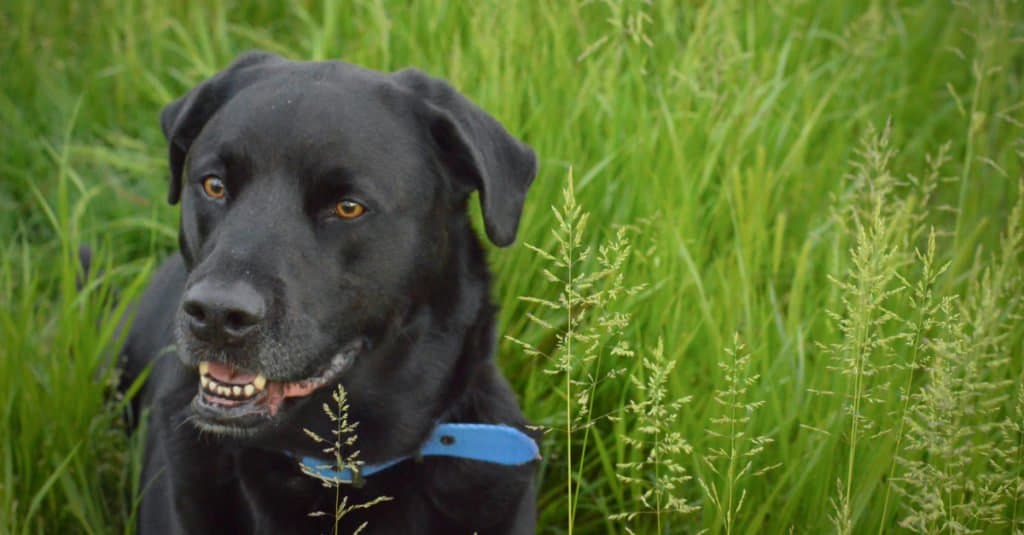
Pitadors are very loyal and energetic, which is why they need plenty of exercise.
©Stephanie Denise Powers/Shutterstock.com
Pitadors and Children
These dogs are loyal and friendly dogs and are extremely good with children. They are protective and playful around the kids of the family. However, they can turn aggressive if they see a stranger around the children.
Similar Breeds
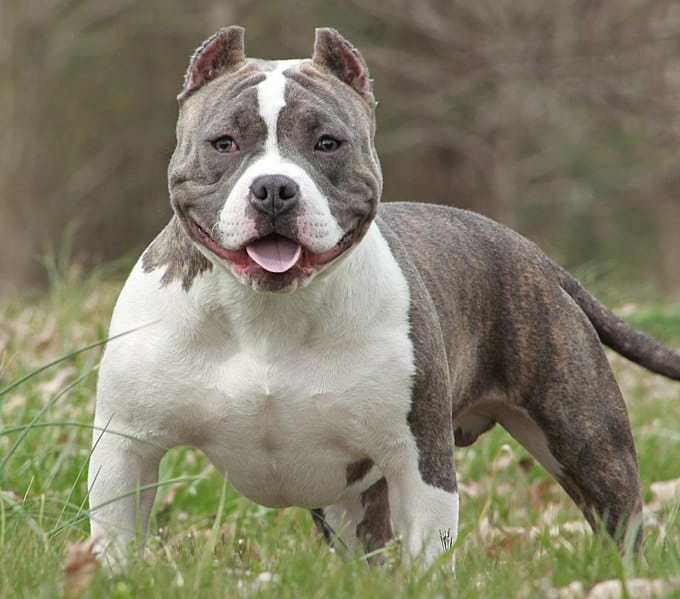
Pit Bulls are a great alternative to Pitadors.
Here are a few dogs that are similar to Pitadors:
- American Pitbull Terrier: These are one of the parent dogs for the Pitadors. They have incredible energy and exude a loving nature, paired with their famously clownish grin.
- Labrador Retriever: These dogs make the other parent for the Pitador and have a loyal, easy-going, and friendly nature.
- American Bulldog: These dogs have a strong build and are loyal. They are fun and friendly toward everyone.
Famous Pitadors
Any famous Pitadors are not known as of now. However, as the breed becomes more popular, the ease of training and the quick intelligence may soon reach the silver screen.
Popular Names
Here are some of the popular names for Pitadors:
- Dash
- Harley
- Boomer
- Duke
- Ace
Pitador FAQs (Frequently Asked Questions)
What is a Pitador?
Pitadors are hybrid dogs that are a cross of an American Pitbull Terrier and Labrador Retriever dog. They take their coat colors from their parent dogs. However, brown is a common color.
Are Pitadors dangerous?
They are not usually dangerous. However, they can turn aggressive around strangers and sometimes also around cats and other small pets that they do not get along with.
Are lab pit mix good dogs?
These dogs are highly energetic and smart.
How big do Bullador dogs get?
Bullador dogs are usually 17 to 20 inches big.
How big do Pitadors get?
They are usually 21 to 25 inches big and can weigh around 55 to 70 pounds.
How much does the Pitador cost to own?
The price of a Pitador could be anywhere between $75 to $400. You could expect an additional price of $1000 for its annual maintenance.
Is a Pitador good with kids?
Yes, Pitadors are great with kids. They are protective and playful around them.
How long does a Pitador live?
The lifespan of a Pitador is about 10 to 14 years.
Thank you for reading! Have some feedback for us? Contact the AZ Animals editorial team.
Sources
- dogtime.com / Published March 25, 2021
- loveyourdog.com / Published March 25, 2021
- greengarageblog.org / Published March 25, 2021
- loveyourdog.com / Published March 25, 2021
- dogbreedplus.com / Published March 25, 2021
















